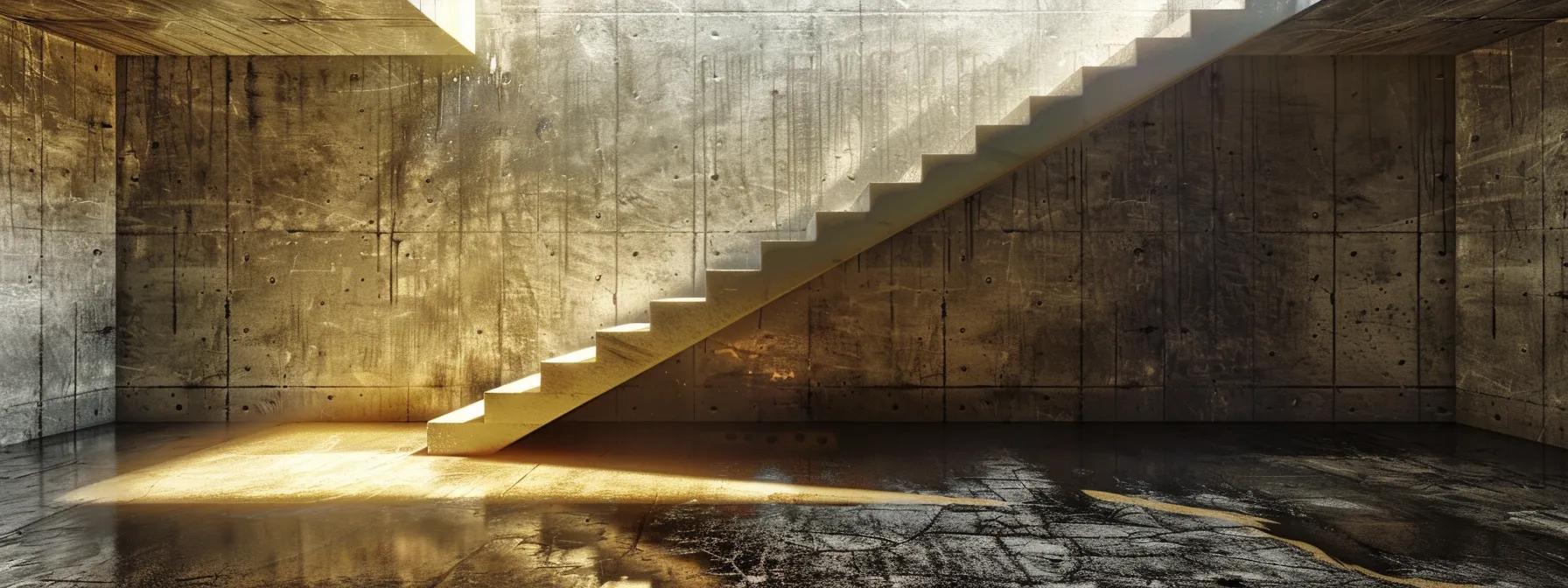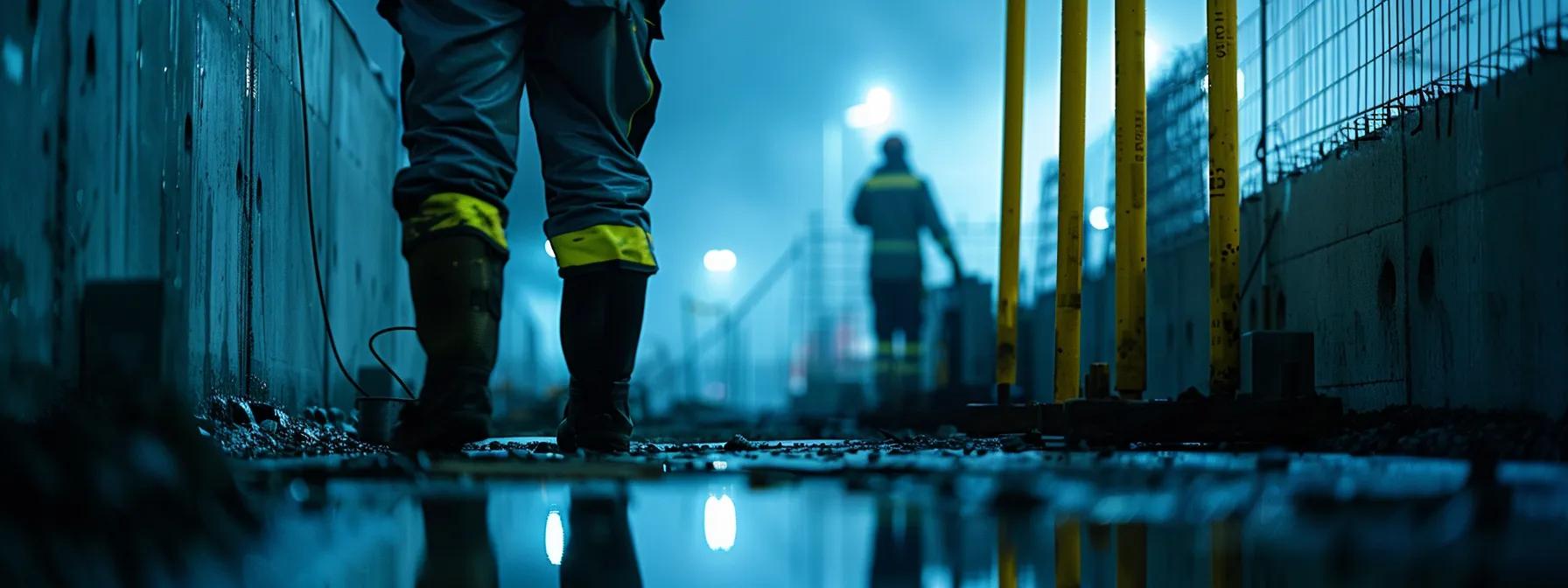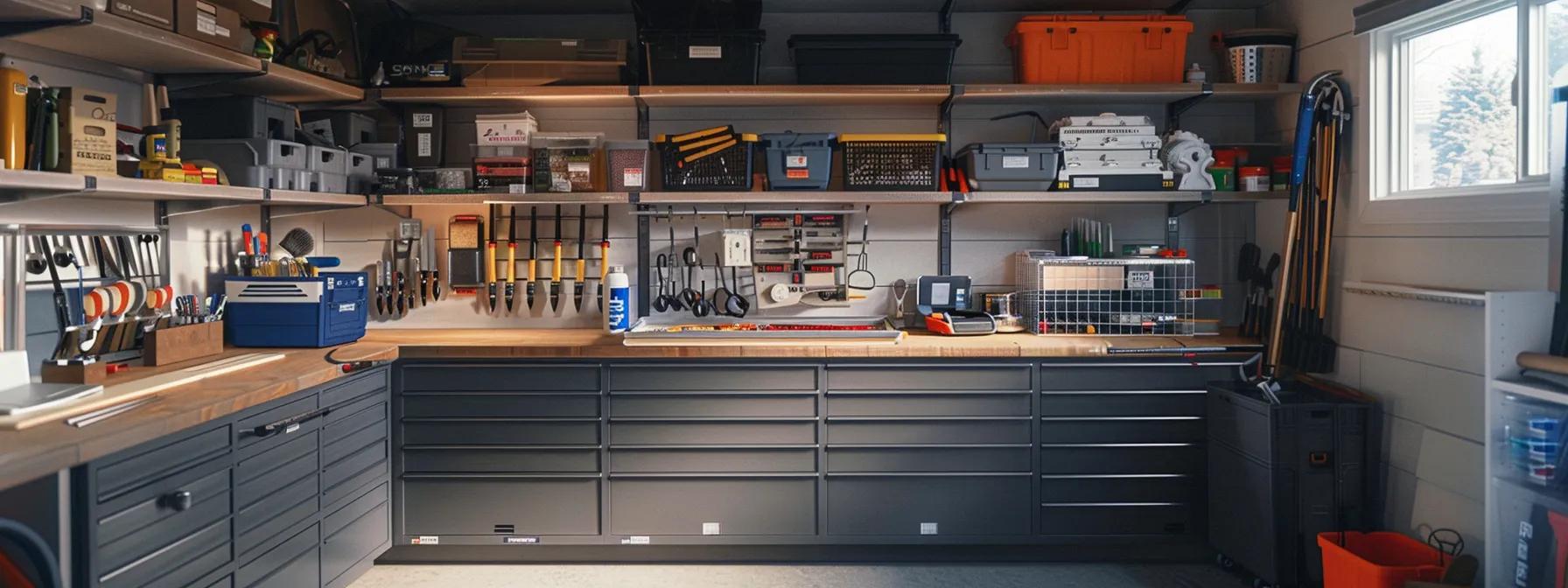Best Basement Waterproofing Systems for Your Home
Basement water issues can be a significant headache for homeowners trying to maintain a strong foundation and a dry living space. At JME Basement Waterproofing, we know that basement waterproofing Winston Salem NC is about more than just stopping leaks—it’s about protecting your home’s structure, improving air quality, and avoiding expensive repairs down the line.
We’re here to help you understand your basement’s unique needs by breaking down both interior and exterior waterproofing options. With years of experience and trusted techniques, we provide clear, practical guidance to help you choose the right system for keeping your basement dry, safe, and comfortable for years to come.
Before diving into the specifics, let’s summarize the key takeaways from this article:
Key Takeaways
- We explain how to identify and assess common basement water problems and how they affect your foundation.
- We explore both interior and exterior waterproofing methods, outlining benefits, limitations, and effectiveness.
- We evaluate different types of waterproofing systems based on structural integration, drainage strategies, and regulations.
- We provide insight into key components and products such as membranes, tanking slurries, and sump pumps.
- We conclude with guidance on selecting the best system tailored to your basement’s condition and budget.
Understanding Your Home’s Waterproofing Needs

The first step in protecting your basement is understanding its waterproofing needs. Most basements experience water seepage, dampness, and intrusion due to cracks in foundation walls or issues with the surrounding soil. Signs like efflorescence, damp patches, or a musty odor indicate the need for waterproofing.
Identifying Common Basement Water Problems
Water problems are not always the result of heavy rains; they can also come from poor drainage systems, high water tables, or plumbing leaks. Visible cracks, muddy water accumulation, or mold growth require thorough assessment. Detailed inspections help us determine if water intrusion is due to foundation cracks, clogged downspouts, or deteriorating water barriers.
Assessing the Severity of Water Intrusion
It is critical to assess the extent of water damage by measuring humidity levels and checking for structural shifts. Tools like moisture meters and thermal imaging cameras can reveal hidden water tracks. Even a slight leak may signal a larger issue that could compromise your foundation’s integrity.
Pinpointing Water Entry Points in Your Basement
We inspect key areas such as joints between walls and floors, exterior wall corners, and where plumbing penetrates the foundation. Additionally, features like sump pumps and drainage systems may become overwhelmed by extreme water pressure. Identifying these entry points directs us toward effective solutions.
Considering Your Local Climate and Soil Conditions
Local climate and soil have a major impact. Homeowners in Winston-Salem, NC, face seasonal rainfall, fluctuating water tables, and expansive clay soils that retain water and exert pressure on basement walls. These factors require waterproofing solutions that are resilient and durable under heavy storm or prolonged wet season conditions.
Determining Your Budget for Waterproofing Solutions
Cost is a key consideration when it comes to basement waterproofing Winston Salem NC. Options range from interior sealants and drainage systems to exterior membrane installations. Though the basement waterproofing cost can seem high upfront, a smart investment now helps prevent costly repairs down the road. At JME Basement Waterproofing, we partner with homeowners to find solutions that balance budget and lasting protection. Our goal is to deliver effective waterproofing that stands the test of time without breaking the bank.
Exploring Interior Waterproofing Systems for Your House
Interior waterproofing controls water that has already penetrated the exterior barrier. Used when exterior solutions are not feasible, these methods become part of your basement’s finish. Here, we review common interior waterproofing techniques.
Applying Interior Sealants and Waterproof Coatings
Interior sealants and coatings (typically epoxy or polyurethane-based) are applied directly to walls and floors to fill cracks and prevent water penetration. These treatments are easy to apply and integrate well with existing finishes. However, they are designed primarily for minor seepage and may not withstand significant hydrostatic pressure.
Installing Interior Drainage Systems to Manage Water
Interior drainage systems consist of channels or pipes that collect water along the basement perimeter and direct it to a sump pump. This method is especially effective in high water table situations. It quickly removes water and reduces the risk of mold and structural degradation.
Utilizing Sump Pumps for Water Removal
Sump pumps extract water that enters the basement, preventing its accumulation around the foundation. Our systems include high-capacity pumps with battery backup to ensure continuous operation during power outages. Regular maintenance is essential for optimal performance.
The Role of Vapor Barriers in Moisture Control
Vapor barriers, typically made of polyethylene, are installed on walls and floors to arrest moisture migration. When combined with dehumidifiers, these barriers help maintain a controlled indoor environment and reduce the risk of mold growth.
Benefits and Drawbacks of Interior Solutions
Interior methods offer easy access for maintenance and directly manage internal water issues, but they do not address the source of water pressure. In some cases, particularly with high soil pressure, combining interior and exterior strategies may be necessary for long-term success.
Examining Exterior Waterproofing Systems as a Protective Measure

Exterior waterproofing prevents water from reaching the basement by addressing the issue at the source. Applied at the foundation level or on exterior walls, these systems serve as a primary barrier.
Applying Exterior Waterproofing Membranes and Coatings
Exterior membranes and liquid-applied coatings adhere to the outside of the foundation. They resist hydrostatic pressure and direct water runoff away from the structure. Although very effective, installation is labor-intensive and may require excavation, which can be disruptive and costly.
Implementing Exterior Drainage Systems Like French Drains
French drains involve a perforated pipe laid in gravel that collects and diverts water away from foundation walls. Properly installed french drains lower the local water table, though they need occasional maintenance to clear sediment and debris.
The Process of Excavation for Exterior Treatments
Excavation allows us to clean and prepare the foundation surface, apply sealants, and install membranes or drainage channels. Despite its invasiveness and potential disruption to landscaping, excavation addresses the root cause of water intrusion and offers robust long-term protection.
Advantages and Disadvantages of Exterior Methods
Exterior solutions prevent water entry entirely, thereby maintaining structural integrity and indoor air quality. However, they are generally more disruptive to install and may not be practical in densely built areas, and the initial cost is typically higher.
When Exterior Systems Are the Optimal Choice for Your Home
Exterior waterproofing is advised when water pressure is severe, soil conditions are highly expansive, or the foundation is particularly vulnerable. In such cases, these systems may be used alone or in combination with interior methods to ensure comprehensive protection.
Evaluating Different Types of Basement Waterproofing Systems
Basement waterproofing systems fall into three main categories, each with distinct approaches:
Type A Barrier Protection Systems Explained
Type A systems create a physical barrier using coatings, membranes, and sealants applied directly to foundation surfaces. They offer an accessible and cost-effective solution for minor water pressures but require regular maintenance to preserve their effectiveness.
Type B Structurally Integral Protection Systems Detailed
Type B systems integrate waterproofing into the structure itself. Methods such as cementitious coatings, injection grouts, and epoxy sealants bond deeply with the foundation, enhancing structural resilience. Though more expensive and disruptive initially, they provide a more permanent solution when the foundation is already compromised.
Type C Drained Protection Systems (Cavity Drain Systems)
Type C systems use a drainage cavity created by installing a specialized membrane on the interior of foundation walls. This approach channels any water that penetrates the outer barrier into a drainage system, which then removes it with a pump. These systems are particularly useful in areas with high groundwater levels, though they demand careful installation and consistent maintenance.
Comparing the Effectiveness of Each System Type
Each system has its merits and limitations. Type A is less invasive and more affordable but may require frequent upkeep. Type B offers lasting protection through structural integration at a higher cost, and Type C actively manages water via drainage, making it ideal for challenging groundwater conditions. Often, a combination of methods provides the best overall protection.
Adhering to Waterproofing Regulations Like BS8102
Regardless of the chosen system, adhering to industry regulations such as BS8102 is essential. These standards ensure that installations meet safety and performance specifications, protecting homeowners from liability and ensuring long-term durability.
Key Components and Products in Top Basement Waterproofing Systems

High-quality materials and precise installation are critical for effective waterproofing. Below are key components we use:
High-Capacity Waterproof Membranes for Walls and Floors
These membranes, available as sheets or liquid-applied coatings, are engineered to resist hydraulic pressure and remain flexible despite concrete movement. They provide a reliable, continuous barrier against seepage.
Flexible Tanking Slurries and Membranes
Tanking slurries form an elastic, water-resistant layer that adapts to structural movement without cracking. When combined with membranes, they significantly reduce water ingress even with minor shifts in the structure.
Rapid Patching Materials for Active Leaks
High-strength cementitious patching compounds and epoxy injections offer immediate repair for active leaks. Their fast curing times and strong adhesion make them indispensable for sealing cracks quickly.
Sump Pump Systems and Their Importance
Sump pump systems collect and remove water that enters the basement, featuring high-capacity motors and battery backups to ensure continuous operation during outages. Their integration with drainage systems is crucial for maintaining a dry environment.
Dehumidifiers for Controlling Basement Humidity
Dehumidifiers combat condensation and mold by regulating humidity levels. They play an important supporting role in protecting the basement after water has been kept out.
To compare these components, consider the following table:
Selecting the Best Basement Waterproofing System for Your Specific Home
Choosing the right basement waterproofing system involves careful evaluation of several factors. At JME Basement Waterproofing, our recommendations are based on a detailed assessment of your basement’s condition, your intended use of the space, and your budget.
Assessing Your Basement’s Current Condition and Intended Use
Determine whether your basement suffers from chronic leaks, occasional dampness, or significant water pressure. The severity of issues combined with how you plan to use the space—whether for storage, living areas, or occupancy—dictates the level of waterproofing required. A finished basement demands higher moisture protection compared to a simple storage area.
Comparing Quotes From Professional Waterproofing Contractors
Obtain multiple assessments from reputable contractors to compare not only costs but also the range of services provided. Comprehensive warranties and a proven track record are key indicators of quality work.
Considering Long-Term Effectiveness and Maintenance Requirements
While installation costs are important, long-term performance and maintenance are equally critical. Exterior systems might require periodic maintenance but provide enduring protection, whereas interior systems might need less upkeep yet could be insufficient under high hydrostatic pressure.
DIY Options Versus Professional Installation for Your Home
There are DIY waterproofing options available; however, due to the complexity of water intrusion issues, professional installation is typically recommended. Our expertise in Winston-Salem, NC ensures proper system integration, adherence to standards, and peace of mind with reliable warranties.
Making the Final Decision for a Dry and Healthy Basement
When it comes to basement waterproofing Winston Salem NC, it’s important to look at the big picture—your basement’s current condition, the installation method, cost, and how well the solution will hold up over time. In many cases, combining interior and exterior systems gives you the best protection. Our priority is making sure your basement stays dry, safe, and structurally sound for the long haul.
Here’s a quick checklist to help guide your decision:
- Check for signs of water damage and moisture levels
- Learn about your options—barrier, structural, and drainage systems
- Get quotes from trusted professionals
- Factor in long-term maintenance and cost
- Decide if you’ll need expert installation
By taking the time to weigh these details and working with a knowledgeable team like ours, you can confidently choose a solution that protects your home and your peace of mind.
Frequently Asked Questions
Q: What is the main difference between interior and exterior waterproofing systems? A: Interior systems manage water that has already penetrated the basement through sealants, drainage systems, and sump pumps, while exterior systems prevent water from reaching the basement by applying membranes and drainage solutions to the foundation’s exterior.
Q: How do I know which type of waterproofing system is right for my basement? A: A professional inspection that assesses the severity of water issues, soil type, local climate, and basement usage will help determine whether a barrier protection, structurally integrated, or drainage (Type C) system is most suitable.
Q: Can I install waterproofing solutions myself, or should I hire a professional? A: Although DIY options exist for minor issues, severe water intrusion or structural concerns require professional installation to ensure proper integration and long-term protection.
Q: How long does it typically take to complete a basement waterproofing project? A: The duration depends on the project’s complexity and system type, usually ranging from a few days to a couple of weeks, with professional assessments providing a realistic timeline to minimize disruption.
Q: What maintenance is required after installing a basement waterproofing system? A: Regular inspections, cleaning of drainage systems, periodic sump pump checks, and timely repairs are essential. Many service providers offer maintenance plans to keep your basement dry over the long term.
Q: Do waterproofing systems improve indoor air quality? A: Yes, by reducing excess moisture and preventing mold and mildew growth, effective waterproofing enhances indoor air quality and overall living comfort.
Q: How do local soil conditions affect the choice of waterproofing system? A: Clay-rich soils that retain water create higher water pressure on foundations. In such cases, systems incorporating drainage solutions, such as french drains or cavity drain systems, are often more effective. A professional assessment will help tailor the solution to your home’s environment.
